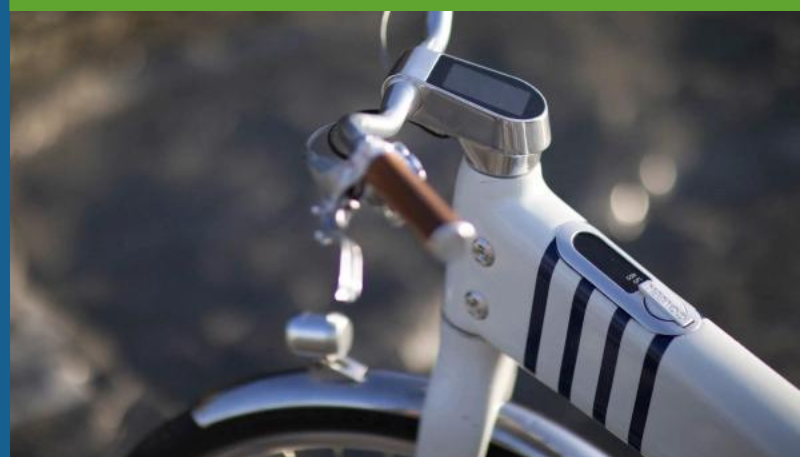In 10 years, the demand for electrically assisted bicycles (e-bikes) has risen sharply, as has the number of companies specialising in the sector.
Thus, on the users’ side, it is difficult to make a choice among all the models of e-bikes now available, which is why manufacturers are increasingly diversifying their bikes or betting on quality. Indeed, with the pandemic and the current shortage of components, some manufacturers are relocating their production to Europe to ensure a better final product.
History and figures about e-bikes
E-bikes or electrically assisted bicycle are not, as one might think, a recent invention. The first patent for an electric bicycle was filed in 1895 in the United States and the first mass production began in the 1930s.
Regardless of the precise term used, the fact is that this market has enjoyed very strong growth in recent years to the point of reaching $25.03 billion in sales by 2020. On a national level, it is estimated that more than 500,000 new EVs were sold in France in 2020, a figure that is 29% higher than the previous year. However, France is still far behind Germany, where 1.9 million electric bicycles were sold in 2020, an increase of 47% compared to the previous year.
This general craze for electric bicycles can be explained by several factors. First of all, the impact of the global pandemic should be considered as the cause of the increase in sales. Indeed, between telecommuting and public transport, which is highly exposed to the spread of the virus, users have adapted to a new means of transport that apparently presents less risk of contamination during their daily journeys.
But beyond that, one should also consider the rise in popularity of electric mobility in general (as evidenced by electric vehicle sales in 2020). This can be explained in particular by the growing concern of the population to limit its environmental impact, but also by the increasing restrictions on the use of thermal vehicles in Europe’s major cities.
Finally, in France, the public subsidies introduced in recent years to reduce the price difference with conventional bicycles have also had a positive impact on sales of electric bicycles.
A diversification of e-bikes models and a wide range of prices
Quite logically, within a market that has been growing rapidly in recent years, many start-ups have appeared around the e-bikes, sometimes with innovative and original concepts.
Today, there are about ten categories of e-bikes, including
- The urban electric bike
- The electric mountain bike
- The folding electric bike
- The cargo bike
- The electric hiking/trekking bike
- The electric road bike
- The all-terrain electric bike
- The speed bike or fast electric bike
Between all these categories, the budget varies greatly. Today, manufacturers and experts in the cycling world agree that bikes under 1000 €can be considered as low-end. 1500 to 3000 € corresponds to the range with the widest choice of models and often the most appreciated by users. Together, these two price segments now account for around 80% of the EABs on sale. Finally, there is the top of the range for all bikes priced over 3000€.
The price that you wish to invest in an e-bike will depend on several criteria such as the use that you intend to make of it (off-road or city), the frequency of use or even the number of people or the amount of space that you wish to have in the case of cargo bikes for example.
It is estimated that in 2018, the average French person spent €1,750 on an electric bicycle. However, with the growth of the market, this budget has risen slightly, not to mention the fact that made in France is becoming increasingly attractive.
The display section: a differentiating element
In addition to the diversification of the available models of e-bikes, the quality and final appearance of the various parts of the bike are criteria that are increasingly appreciated by consumers, particularly in the case of urban bikes. Among the differentiating criteria that can be chosen there is the display.
Just as car dashboards have evolved significantly in recent years, the display on e-bikes is bound to follow the same path.
The display and the HMI (Human Machine Interface) that goes with it, are an integral part of the user experience and his general appreciation of the electrical bycicle. It is therefore important that this part, sometimes considered less strategic, is nevertheless in line with the quality of the other components of the bike (saddle, frame, handlebars etc.).
That’s why Clairitec®, designer and manufacturer of displays for over 20 years, offers you products adapted to your e-bikes.
Thanks to our experience in the field of the e-bike, you will be able to configure your display according to your criteria and budget. Among the list of our available adaptations we find :
- Intelligent displays of all sizes.
- Different display technologies available (segment, transmissive or transflective)
- High brightness displays for good visibility in sunlight
- Anti-UV filter to prevent premature yellowing of the screen after long exposure to the sun Anti-glare filter to improve readability depending on the viewing angle of e-bikes
- The addition of Bluetooth for communication with a smartphone / third party application The possibility of adding the communication protocol of your choice to interface with your battery and motor (CAN, ANT +…)
- Adaptation to your box or design of a custom box for your e-bike
In addition to this, Clairitec® offers you with these products :
- 10 years of commercial continuity
- EMC pre-qualification
- Products designed and manufactured in France
- Individual testing of all our displays
- A return rate following a non-conformity lower than 0.056%.
So, if you want to add a differentiating element to your e-bikes, you can entrust the display part to Clairitec®, the company specialised in graphic displays that listens to your needs.
Do you have any questions? Contact us by clicking here.

